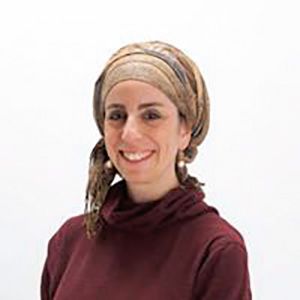
I have been asked recently by different people to write about or explain what PBL, STEAM and Torah have to do with each other. Initially, I struggled to write the article. I was overwhelmed with this lurking feeling that something was missing in the question. When I was asked again to write, it dawned on me that the reason for this hurdle is that I naturally perceive the inherent connection between everything in the world—from STEAM to Tanach. I needed to guide others to see the world through this same lens in order to articulate the value of an un-siloed education.
My own curiosity drove my early parenting journey in educating through PBL. When I started to teach my children, my first students, about hilchot Shabbat, I took them out to plant seeds to explain choresh and zoreah. We went to a farm to see a sheep being shorn and to try our hand at gozez. The natural world was inherent to understanding the halacha we were exploring. As my teaching career developed, I would bring Torah examples into math class. Students would question why I brought the Gemara Sukkah in for them to explore estimated values of pi. “This isn’t Gemara class,” they would say. My response to them was that you are a Jew all day, not just in your Torah classes. There is so much more to learn in a world where Torah and science and art and humanities all contribute to the same conversation.
Recently, I had the chance to be both visiting mom and teacher in my 5-year-old’s classroom. I reviewed the week’s parsha, Va’era, with the students. In a discussion about the first seven makot, I also taught them to draw a frog, representing makat tzfardeah and a glass of water representing the first makah, dam. They wrote the name of each makah on top in their emerging Hebrew. Then I presented a mini-lesson on circuits to review their previous study. Each child then chose to either light up their frog with a green LED or reenact the plague itself by changing their water to blood with a red LED. By doing this, unbeknownst to them, the students had done a PBL unit!
Could this class be called Hebrew, writing, art, science or parsha? Through the vision of the world as one big place to learn and explore, in essence-a PBL lens, these students hit an educational home run. They increased their knowledge in many areas, tapping into the inherent connectedness in the world and with a passion to learn all that is out there.
In my current physics class at The Idea School, I recently assigned the students to write an advice column letter to a fictitious student their age who had reached out to them for guidance about a typical teenage struggle such as screen addiction, poor time management, bad study habits or harmful influence. They had to choose one of Newton’s laws as well as a Mishna from the first chapter of Pirkei Avot, which they studied in tefillah talks during the last few weeks, to explain the problem and suggest a solution. The students demonstrated that inertia and momentum play big roles in their lives both in the physical and emotional realm. They explained to their audience that, as Newton suggests, they should exert a large force to accelerate their attempt to overcome their challenges. Also, as recommended in Pirkei Avot 1:6, they implored their generation to seek good friends and advisors to help them as they navigate these challenging years.
So, allow me to now pose the question back to the inquiring minds. How can Torah, humanities, science, art and math not be perceived as connected? In my view, a PBL educational approach can only enrich the experience in each discipline, making learning accessible to all. Just ask those smiling 5-years-olds who made the makot come to life using science. Or the students at The Idea School who used the concepts of physics and the Mishna as their guide to help others through writing a persuasive letter and ultimately developed more impactful life strategies. An un-siloed education can allow each child to see how their passions connect them to other disciplines, and Hashem’s entire world, and thereby drive success. The philosopher can relate to science, the artist to Torah, the historian to math and every child to the Godliness and greatest inside of themselves. That is certainly the PBL lens, one that we could all benefit using to perceive the world.
By Rochie Sommer
Rochie Sommer is head of math, science and STEM at The Idea School.










